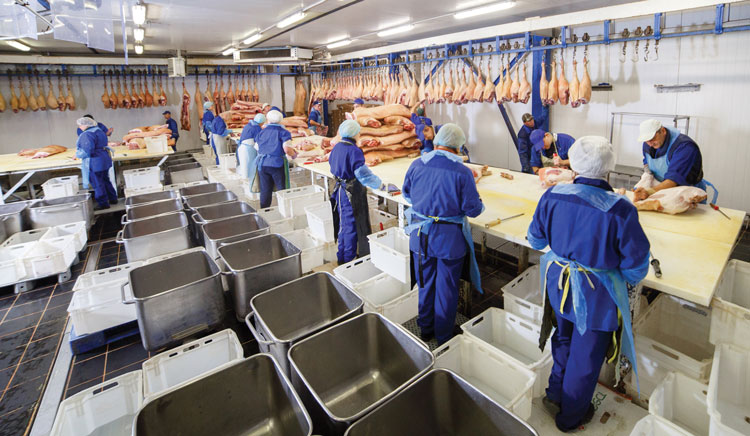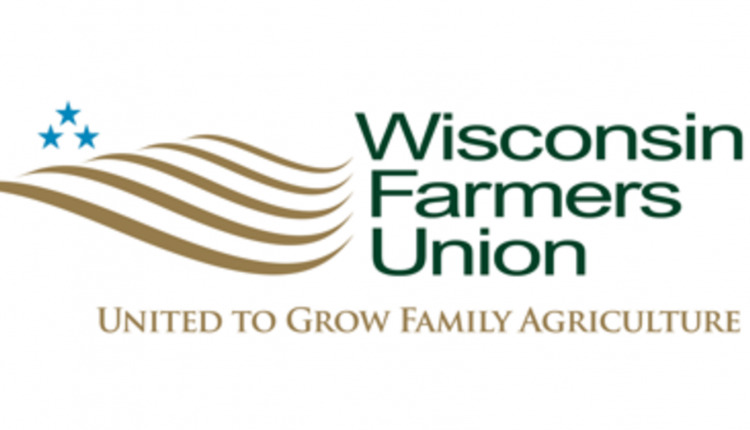
Before container ships began to pile up off the California coast, lumber prices skyrocketed, and car manufacturing came to a standstill, the agricultural industry was thrust into the spotlight as the COVID-19 pandemic began to reveal the nation’s first supply chain constraints.
The comparatively local production of many agricultural goods and a just enough, right-on-time production system revealed a lack of redundancy and resilience in certain portions of the value chain. While this is generally good for industry efficiency, it makes the entire system inherently vulnerable to abrupt challenges to the status quo.
The past two years have underscored the diversity of existential and only partially mitigated dangers that lie in wait for the dairy sector and broader agriculture industry. Although day-to-day concerns from “conventional threats” such as controlling an upward trend in somatic cell count will never stop, more systemic concerns for the industry such as workforce availability or cyberattacks are beginning to have real impacts on everyday farm operations.
After the 9/11 attacks of 2001, the Bush administration took several steps to combat the growing specter of terrorist organizations, including the release of Homeland Security Presidential Directive-9 (HSPD-9): “Defense of United States Agriculture and Food (2004)” in 2004. Presidential directives provide executive branch departments with the desired policy of the White House and drive decision-making across the federal government.
HSPD-9 took a cross-cutting look at the risks to our nation’s food supply and proposed new policies to protect agriculture from nontraditional threats, such as terrorism and major natural disasters. However, over the past two decades, new hazards for the agricultural and dairy industries have emerged.
A new directive
On November 16, 2022, President Biden signed National Security Memorandum 16 (NSM-16), “Strengthening the Security and Resilience of United States Food and Agriculture.” By replacing HSPD-9, NSM-16 aims to address these emerging risks, informed by critical lessons learned over the last few years, to provide an updated national policy on the defense of agriculture.
NSM-16 widens the aperture as to what constitutes a danger for agriculture and our food supply, broadening our view from a focus largely on biological threats to now include all chemical, biological, radiological, and nuclear (CBRN) agents; rising cyber threats; workforce availability; and climate change.
Cybersecurity takes center stage
Within the last few years, criminals and adversaries have began stepping up hostile efforts to exploit cybersecurity vulnerabilities in the agricultural commodity chain. Most notably was a hack of JBS USA in May 2021 that resulted in the payment of an $11 million ransom to restore operations. Ultimately, bad actors targeted the dairy industry multiple times as well, including processing plants in October 2021 and March 2022.
Each hack stalled receipts from haulers, forcing many producers to find new processing plants for their milk and causing headaches throughout the industry to sort out how to keep milk moving through the shutdowns. Some schools even began preparations to switch from milk to juice, an obviously undesirable alternative, as their shipments were delayed without confirmation of a future delivery date.
Attacks on the dairy industry could certainly expand beyond processing plants. As farms continue to automate and merge, their allure for hackers only rises, placing animal welfare and individual farm finances at risk. For more information on how to improve your farm’s cybersecurity, refer to the April 4, 2022, article in Hoard’s Dairyman Intel, “For dairy, cybersecurity is vitally important.”
Recognizing this vulnerability to our nation’s food supply, NSM-16 aims to shore-up cybersecurity by directing multiple departments, including USDA, Department of Homeland Security (DHS), and Department of Health and Human Services (HHS), to coordinate, accelerate, and expand research and development of cybersecurity capabilities for the food and agriculture sector. It also directs these agencies to develop improved systems for early detection and warning of high-consequence agricultural cyber threats.
NSM-16 further designates DHS as the lead department for cybersecurity technical assistance. DHS may seem to be an odd choice, but the expertise in two of DHS’s components, the Cybersecurity and Infrastructure Security Agency (the lead federal agency in protecting critical infrastructure) and the Office of Health Security (the lead federal agency for prevention of catastrophic agricultural incidents), makes DHS well suited to take on this much needed role as lead coordinator.
Workforce readiness
Cyberattacks are not alone in revealing the intricate dependencies of the agricultural value chain. The early days of the COVID-19 outbreak further revealed the fickle nature of the human workforce that the dairy industry depends on. As many farms and packing plants struggled to continue to move animal products while maintaining a safe work environment for employees, it became clear that even small deviations from the fine-tuned supply chain caused a ripple effect through entire sectors.
Whereas media attention largely focused on the significant impacts to the pork industry, labor issues reduced the domestic beef slaughter capacity by more than 10% in spring 2020, impacting the ability to move cull cows. Processing plants and abattoirs shut down by company or health department order only confounded the historical labor challenges faced by the dairy industry. Similarly, many farms faced supply movement challenges as the trucking workforce was reduced by sick or grounded workers.
NSM-16 directly aims to address these challenges through two policy directives. The first instructs USDA and HHS to develop a stronger workforce pool for the industry to pull from through support of vocational and certificate training programs, with a focus on skilled worker development for the industry.
The second policy focus directs DHS to work with other federal agencies to identify the essential critical infrastructure workers in agriculture and collaborate with state and local governments and private industry to prioritize these workers during future crises. This includes creating new solutions that focus on keeping the most critical workers productive during an emergency while maintaining their health and safety. Although specifics are not provided, this shift in policy should help us avoid being caught off guard by unexpected emergencies in the future.
The on-farm impact
It can take time for federal policies to make their impact felt at the ground-level, but if the longevity of HSPD-9 is any indication, the policy set forth in NSM-16 may drive program development and federal funding for many years to come.
NSM-16 states that, “The evolving threat environment requires the (food and agriculture) sector and its essential workforce to better prepare for and respond to incidents with broad impacts on our national and economic security.” Through NSM-16, the federal government has taken a positive step forward in providing relevant departments the policy direction and justification needed to prepare the dairy industry for unforeseen future dangers.
Over the coming years, it will be up to state and local governments, universities, private industry, and individual farms to do their part and take advantage of the programs that will trickle down from this policy and maintain the efficiency of our agricultural sector while building in an agile resiliency.






